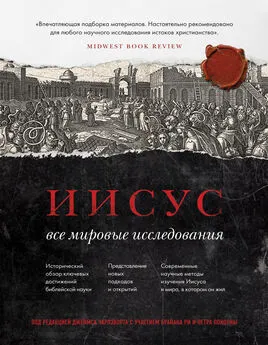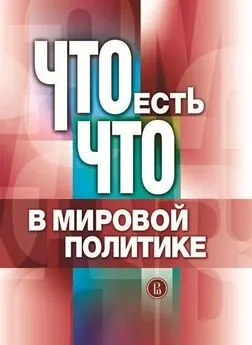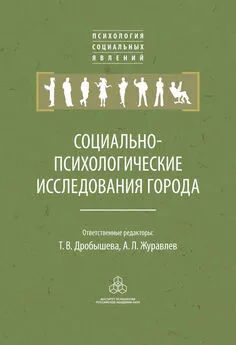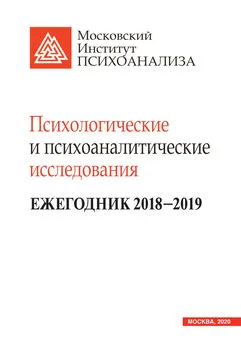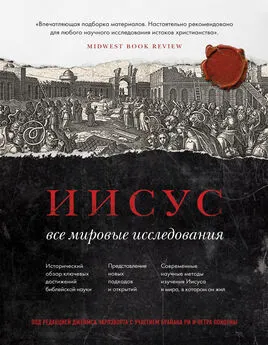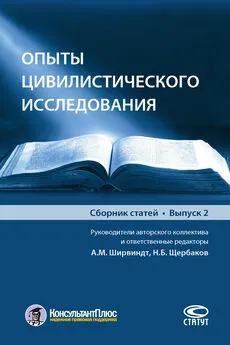Коллектив авторов - Иисус. Все мировые исследования
- Название:Иисус. Все мировые исследования
- Автор:
- Жанр:
- Издательство:Эксмо
- Год:2021
- Город:Москва
- ISBN:978-5-04-155616-7
- Рейтинг:
- Избранное:Добавить в избранное
-
Отзывы:
-
Ваша оценка:
Коллектив авторов - Иисус. Все мировые исследования краткое содержание
Иисус. Все мировые исследования - читать онлайн бесплатно ознакомительный отрывок
Интервал:
Закладка:
299
См. особ.: Charlesworth, «The Historical Jesus in the Fourth Gospel: A Paradigm Shift?» JSHJ 8 (2010): 3–26.
300
В данном списке представлены важнейшие публикации на эту тему с начала нового тысячелетия: J. Zangenberg, H. W. Attridge, and D. B. Martin, eds., Religions, Ethnicity and Identity in Ancient Galilee (WUNT 210; Tübingen: Mohr Siebeck, 2007); J. H. Charlesworth, ed., Jesus and Archaeology (Grand Rapids: Eerdmans, 2006); M. A. Chancey, Greco-Roman Culture and the Galilee of Jesus (SNTSMS 134; Cambridge: Cambridge University Press, 2005); M. H. Jensen, Herod Antipas (WUNT 2/215; Tübingen: Mohr Siebeck, 2006); M. Aviam, Jews, Pagans, and Christians in Galilee (LG 1; Rochester, N. Y.: University of Rochester Press, 2004); R. Frankel et al., Settlement Dynamics and Regional Diversity in Ancient Upper Galilee (IAA Reports 14; Jerusalem: Israel Antiquities Authority, 2001). Из недавних исследований: S. Freyne, «Galilee, Jesus and Archaeology», ExpTim 119 (2008): 573–581.
301
E. M. Meyers, J. F. Strange, and D. E. Groh, «The Meiron Excavation Project: Archaeological Survey in Galilee and Golan, 1976», BASOR 230 (1978): 1–24; E. M. Meyers and J. F. Strange , Archaeology, the Rabbis, and Early Christianity (London: SCM, 1981).
302
M. A. Chancey, The Myth of a Gentile Galilee (SNTSMS 118; Cambridge: Cambridge University Press, 2002), с. 69–83; Jensen, Herod Antipas , с. 149–160; J. H. Charlesworth, «Jesus and Archaeology: A New Perspective», Jesus and Archaeology , ed. Charlesworth, с. 11–63, особ. с. 51–55.
303
E. M. Meyers, «Sepphoris: City of Peace», The First Jewish Revolt: Archaeology, History, and Ideology (ed. A. Berlin and J. A. Overman; London: Routledge, 2002), с. 110–120; R. Batey, Jesus and the Forgotten City: New Light on Sepphoris and the Urban Culture of Galilee (Grand Rapids: Baker, 1991); S. Freyne, «Jesus and the Urban Culture of Galilee», Galilee and Gospel: Collected Essays (WUNT 125; Tübingen: Mohr Siebeck, 2000), с. 183–207.
304
R. A. Horsley, Archaeology, History, and Society in Galilee: The Social Context of Jesus and the Rabbis (Valley Forge, Pa.: Trinity Press International, 1996); M. Sawicki, Crossing Galilee: Architectures in Contact in the Occupied Land of Jesus (Harrisburg: Trinity Press International, 2000).
305
S. Freyne, «Town and Country Once More: The Case of Roman Galilee», Archaeology and the Galilee: Texts and Contexts in the Greco-Roman and Byzantine Periods (ed. D. R. Edwards and C. T. McCollough; SFSHJ 143; Atlanta: Scholars Press, 1997), с. 49–56.
306
A. Berlin, Gamla I: The Pottery of the Second Temple Period (IAA Reports 29; Jerusalem: Israel Antiquities Authority, 2006); A. Segal and M. Eisenberg, «The Spade Hits Sussita», BAR 32.3 (2006): 40–51, 78.
307
D. A. Bayewitz and I. Perlman, «The Local Trade of Sepphoris in the Roman Period», IEJ 40 (1990): 153–172; D. A. Bayewitz and M. Aviam, «Iotapata, Josephus and the Siege of 67: Preliminary Report», JRA 10 (1997): 131–165; D. Edwards, «Khirbet Qana: From Jewish Village to Christian Pilgrim Site», The Roman and Byzantine Near East (ed. J. H. Humphrey; 3 vols.; JRASS 14, 31, 49; Ann Arbor, Mich., and Portsmouth, R. I.: Journal of Roman Archaeology, 1995–2002), 3:101–132.
308
F. G. Downing, «In Quest of First-Century С. Е. Galilee», CBQ 66 (2004): 78–97, цит. с. 81.
309
Там же, с. 84.
310
J. L. Reed, Archaeology and the Historical Jesus: A Re-examination of the Evidence (Harrisburg: Trinity Press International, 2002), с. 23–61.
311
M. Aviam, «The Beginning of Mass Production of Olive Oil in the Galilee», M. Aviam, «Viticulture and Olive Growing in Ancient Upper Galilee», Jews, Pagans, and Christians , с. 51–59, 170–180; M. Nun, Ancient Anchorages and Harbours around the Sea of Galilee (Kibbuz Ein Gev: Kinnereth Sailing, 1988).
312
R. T. Fortna and T. Thatcher, eds., Jesus in Johannine Tradition (Louisville: Westminster John Knox, 2001); P. N. Anderson, F. Just, S. J., and T. Thatcher, eds., John, Jesus, and History , vol. 1: Critical Appraisals of Critical Views (SBLSymS 44; Atlanta: Society of Biblical Literature, 2007); vol. 2: Aspects of Historicity in the Fourth Gospel (SBLECL 2; Atlanta: Society of Biblical Literature, 2009).
313
M. Hengel, Die johanneische Frage: Ein Lösungsversuch (WUNT 67; Tübingen: Mohr Siebeck, 1996).
314
N. Avigad, «Jerusalem: The Second Temple Period», NEAEHL 2:717–735, особ. 732–735.
315
S. Gibson, «The Pool of Bethesda in Jerusalem and Jewish Purification Practices of the Second Temple Period», POC 55 (2005): 270–293; U. C. von Wahlde, «The Importance of the New Discoveries for Our Understanding of Ritual Immersion in Late Second Temple Judaism and the Gospel of John», John, Jesus, and History , ed. Anderson, Just, and Thatcher, 2:155–174.
316
Y. Magen, D. Ariel, G. Bijovsky, Y. Tzionit, and O. Sirkis, The Land of Benjamin (JPS 3; Jerusalem: Israel Antiquities Authority, 2004).
317
S. Freyne, «Galileans, Phoenicians and Ituraeans: A Study of Regional Contrasts in the Hellenistic Age», Hellenism in the Land of Israel (ed. J. J. Collins and G. E. Sterling; CJA 13; Notre Dame, Ind.: University of Notre Dame Press, 2001), с. 184–217.
318
J. Ratzinger, Jesus of Nazareth (trans. A. J. Walker; New York: Doubleday, 2007), с. 218–238; M. Hengel and A. M. Schwemer, Jesus und das Judentum (GfC 1; Tübingen: Mohr Siebeck, 2007), с. 237–240. Ср.: S. Freyne, «Jesus and the Galilean Am ha-‘Arets: Fact, Johannine Irony or Both?» John, Jesus, and History , ed. Anderson, Just, and Thatcher, 2:139–154.
319
Tout court (фр.) – просто-напросто. – Прим. ред.
320
S. Byrskog, Story as History – History as Story: The Gospel Tradition in the Context of Ancient Oral History (WUNT 123; Tübingen: Mohr Siebeck, 2000), с. 186–190.
321
S. Mason, «Contradiction or Counterpoint? Josephus and Historical Method», RRJ 6 (2003): 145–188; ср.: Z. Rodgers, ed., Making History: Josephus and Historical Method (JSJSup 110; Leiden: Brill, 2007).
322
S. Freyne, «Die soziale Welt Galiläas aus der Sicht des Josephus» в кн.: Jesus und die Archäologie Galiläas (ed. C. Claussen and J. Frey; BThSt 87; Neukirchen-Vluyn: Neukirchener Verlag, 2008), с. 75–92.
323
E. P. Sanders, Judaism: Practice and Belief, 63 BCE–66 CE (Philadelphia: Trinity Press International, 1992); ср.: S. Freyne , Jesus a Jewish Galilean: A New Reading of the Jesus Story (London: T&T Clark, 2005), с. 1–23.
324
G. W. E. Nickelsburg, Jewish Literature between the Bible and the Mishnah (2 nded.; Minneapolis: Fortress, 2005).
325
B. G. Wright III and L. M. Wills, eds., Conflicted Boundaries in Wisdom and Apocalypticism (SBLSymS 35; Atlanta: Society of Biblical Literature, 2005).
326
Peter B. Machinist, «Outsiders or Insiders: The Biblical View of Emergent Israel and Its Contexts», The Other in Jewish Thought and History: Constructions of Jewish Culture and Identity (ed. L. J. Silberstein and R. L. Cohn; New York: New York University Press, 1994), с. 35–60.
327
Albrecht Alt, Die Landnahme der Israeliten in Palästina (Reformationsprogramm der Universität Leipzig; Leipzig: Druckerei der Werkgemeinschaft, 1925); repr.: Kleine Schriften zur Geschichte des Volkes Israel (3 vols.; Munich: Beck, 1953–1959), 1:89–125; ET: «The Settlement of the Israelites in Palestine», Essays in Old Testament History and Religion (trans. R. A. Wilson; Garden City, N. Y.: Doubleday, 1968), с. 178–221; idem, «Erwägungen über die Landnahme der Israeliten in Palästina», PJB 35 (1939): 8–63, repr.: Kleine Schriften, 1:126–175; Martin Noth, The History of Israel (trans. rev. Peter R. Ackroyd; 2 nded.; London: Adam & Charles Black, 1960), с. 68–84.
328
George Mendenhall, «The Hebrew Conquest of Palestine», BA 25 (1962): 66–87; Norman K. Gottwald, The Tribes of Yahweh: A Sociology of the Religion of Liberated Israel, 1250–1050 BCE (Maryknoll, N. Y.: Orbis, 1979; repr., Sheffield: Sheffield Academic Press, 1999).
329
Lawrence E. Stager, «Response», Biblical Archaeology Today: Proceedings of the International Congress on Biblical Archaeology, Jerusalem, April 1984 (Jerusalem: Israel Exploration Society, 1985), с. 83–87; «The Archaeology of the Family in Ancient Israel», BASOR 260 (1985): 1–35; idem, «Forging an Identity: The Emergence of Ancient Israel», The Oxford History of the Biblical World (ed. M. D. Coogan; New York: Oxford University Press, 1998), с. 123–175.
330
Примечательное исключение – труд Рэйчел Хэверлок: Rachel S. Havrelock, «The Jordan River: Crossing a Biblical Boundary» (Ph.D. diss., University of California, Berkeley, 2004); впоследствии диссертация опубликована в виде книги: Rachel S. Havrelock, River Jordan: The Mythology of a Dividing Line (Chicago: University of Chicago Press, 2011). Здесь все отсылки – к диссертации.
331
В качестве наиболее интересных и актуальных примеров из библеистики см.: Harold Brodsky, «The Jordan – Symbol of Spiritual Transition», BRev 8.3 (1992): 34–43, 52; David Jobling, «‘The Jordan a Boundary’: Transjordan in Israel’s Ideological Geography», в кн.: The Sense of Biblical Narrative II: Structural Analyses in the Hebrew Bible (JSOTSup 39; Sheffield: JSOT Press, 1986), с. 88–133, 142–147; Moshe Weinfeld, «The Extent of the Promised Land – the Status of Transjordan», Das Land Israel in biblischer Zeit (ed. G. Strecker; Göttingen: Vandenhoeck & Ruprecht, 1983), с. 59–75; John A. Beck, «Geography as Irony: The Narrative-Geographical Shaping of Elijah’s Duel with the Prophets of Baal (1 Kings 18)», SJOT 17 (2003): 291–302; Susan Tower Hollis, «Ancient Israel as the Land of Exile and the ‘Otherworld’ in Ancient Egyptian Folktales and Narratives», Boundaries of the Ancient Near Eastern World: A Tribute to Cyrus H. Gordon (ed. M. Lubetski, C. Gottlieb, and S. Keller; JSOTSup 273; Sheffield: Sheffield Academic Press, 1998), с. 320–337.
Читать дальшеИнтервал:
Закладка:
